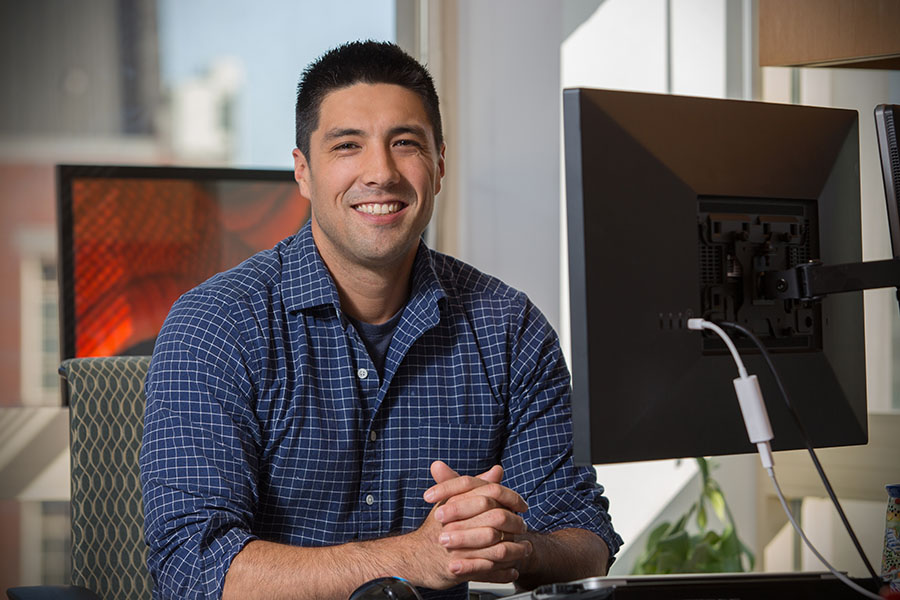
For years, fisheries managers have struggled to find a delicate balance between competing financial and ecological needs. Now, a team of researchers led by a Florida State University faculty member is working toward integrating a third factor — the social and cultural needs of different groups of people.
“Everyone wants their piece of the pie of the ecosystem,” said Daniel Okamoto, an assistant professor in the Department of Biological Science and the lead author on the study. “But we need a better way of making decisions regarding fisheries. Management strategies don’t often consider the social or cultural dynamics because they often aren’t well understood. It’s hard enough to understand the ecology of fish populations, much less how they benefit communities in space and time.”
Okamoto and a group of biologists, mathematicians, social scientists, resource managers and representatives of indigenous cultures have created tools that look at the social and cultural costs and benefits of different management strategies used to protect and recover fisheries. The new models also pay careful attention to how many of these strategies operate in space and time to gain a fuller appreciation for the outcomes and trade-offs associated with each strategy.
Their work is published in the journal Fish and Fisheries.
Okamoto and his colleagues examined trade-offs related to the management of Pacific herring. In the Pacific Northwest and Canada, herring have been central to the social, cultural and economic life of indigenous communities for a millennia, while also serving as a vital part of the food web.
But with large-scale commercial demands on herring, the North American Pacific herring fishery collapsed in 1993 requiring careful management to recover, affecting not only commercial fisheries but also indigenous groups that relied on herring.
In the new model, researchers built a larger axis of trade-offs that integrated social sciences to track the flow of benefits when a given action occurs. They wanted to see how different management strategies affect three key areas of performance — economic, social and ecological.
“We started from qualitative ethnographic information, including local and traditional knowledge to identify indicators linked to various benefits and values of herring,” explained study co-author Melissa Poe, a social scientist at Washington Sea Grant. “We then surveyed different user groups to generate quantitative scores for select indicators to determine outcomes for various fishing sectors, abundances of herring and places of harvest.”
For social benefits of the herring fishery, researchers considered the ability of the commercial fishers to harvest, the ability for indigenous groups to fish, and the community and social relationships within the indigenous communities.
With these social indicators in mind, the team incorporated data on harvest rates, biomass thresholds and fishery closures into their model to study different management strategies. The strategies included four target harvest rates, three limit thresholds for fisheries closures and two spatial closures, where the roe harvest is closed to commercial fishing.
“As expected, many management options resulted in sharp trade-offs in the triple bottom line,” said study co-author Tessa Francis, managing director of the Ocean Modeling Forum and lead ecosystem ecologist with the Puget Sound Institute at UW Tacoma. “Higher commercial catches reduce ecological and social benefits. Lowering closure thresholds have negative economic impacts without providing significant ecological or cultural benefits.”
Spatial closures, however, often resulted in across-the-board wins. They allow for commercial harvest at open locations while also protecting cultural benefits and reducing the risk of collapse in protected areas. However, researchers cautioned that areas marked for closure must be carefully considered, given the ecological productivity and implications for different groups. For example, though commercial fishermen might easily move to new areas, indigenous harvesters might be less mobile.
Okamoto noted that this study is the first step in showing that social and cultural considerations should be incorporated to understand the relative trade-offs of each management decision.
Researchers stressed the model needs refined so it can actively be used by environmental resource managers.
In addition to Okamoto, Poe and Francis, researchers from 17 other institutions participated in this work. The institutions represented are Northwest Fisheries Science Center, Nature Conservancy in Washington, University of Waterloo, Pacific Biological Station in Canada, Alaska Department of Fish and Game, Council of the Haida Nation, Sitka Tribe of Alaska, Gwaii Haanas National Park Reserve, Farallon Institute for Advanced Ecosystem Research, T. Buck Suzuki Foundation, Northern Southeast Regional Aquaculture Association, University of Guelph, Kiel University, University of Alaska Southeast, University of Oxford, German Centre for Integrative Biodiversity Research and Icicle Seafoods Inc.
This work has been funded by Florida State University as well as the Packard Foundation and Pew Charitable Trusts.




